HAROLD PLACE RE-IMAGINED
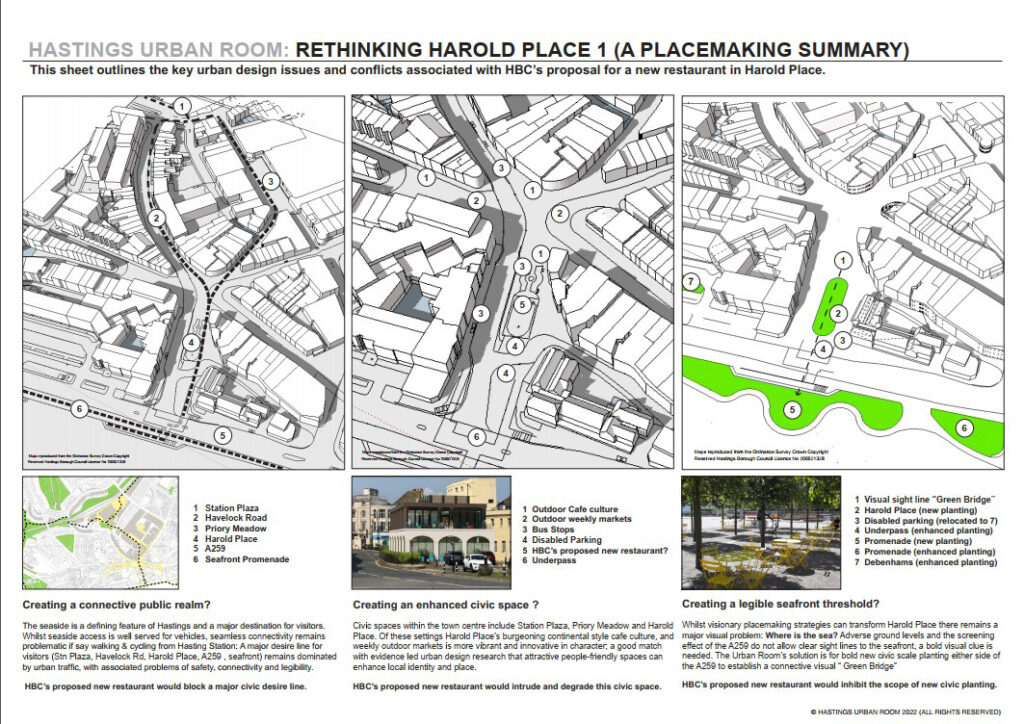
HBC’s proposal to build a restaurant on Harold Place has not been well received by local residents, nor by local councillors outside of the dominant Labour group.
The recent refusal of planning permission should not be seen as a change of heart by the Council merely a temporary set-back. A new planning application is likely, possibly strategically deferred until after the local elections in May.
Now may be the time to consider an alternative approach of landscape-led proposals for Harold Place, which would complement the current Garden Town project and meet the aspirations of HBC’s Seafront Strategy (see News and Views page).
A simple critique of the restaurant proposals (see 10 point checklist) highlights some of the ways in which the restaurant proposal is a poor regeneration initiative. Briefly, such a proposal is a loss of opportunity to improve the townscape setting for the benefit of residents and visitors alike, and will do little if anything to improve the local economy. Another restaurant, operated by an out of town company which will siphon off profits from the local area, is likely to damage the prospects of existing locally owned businesses rather than to kick-start the economy.
The illustration above shows a schematic proposal for a landscape proposal which would create a more positive visual link between town and seaside (larger image Rethinking Harold Place 1). Coupled with improvements to the underpass, as proposed in the Seafront Strategy, the route to the seafront could be made clearer and more inviting to visitors arriving at Hastings Station, and to local resident
HASTINGS CASTLE RELOADED
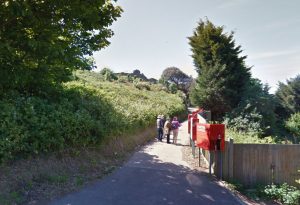
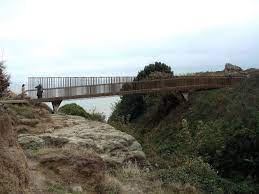
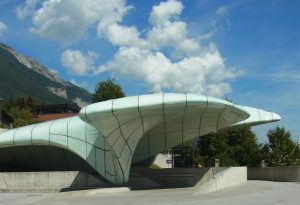
A number of attempts have been made in the past by HBC to secure funding to improve the visitor experience at Hastings Castle. All have failed.
It seems that here were two principal reasons for lack of success – the lack of any meaningful community consultation and concerns that the proposals would be detrimental to the archaeology of the Castle and its setting.
It is hoped that past rejections will inform the detailed development of their current outline proposals.
As HBC have chosen not to make public any details of their current proposals (perhaps not an encouraging start to community involvement) HUDG cannot comment on any specifics, but we would like to offer a line of thought for consideration.
If part of the intent is to provide a “visitor centre” then any impact on a sensitive setting could be reduced by demolishing the current cafe at the top of the West Hill Lift and using that site for it’s location. It is very close to the Castle but well removed from the most archaeologically sensitive areas. It could take the form of a cafe-cum-interpretation centre similar to the modern addition at Battle Abbey.
The current access to the Castle, off Castle HillRoad, is little more than a scruffy back alley, hardly in keeping with HBC’s aspirations to create a “world class attraction”. The shelved 2010 proposal from Terry Pawson Architects to provide a new bridge from Ladies’ Parlour should perhaps be re-examined. In 2019 a bridge to the equally sensitive site of Tintagel Castle was built with English Heritage’s blessing. So why not at Hastings Castle?
Looking to the future, HBC should give serious consideration to provide a 1066 Centre elsewhere as a hub for 1066 Country as a whole with specific links to Hastings Castle, Battle Abbey, Bulverhythe and Pevensey.
The logical location would be White Rock Gardens as it sits between two railway stations, is well served by a number of bus routes and is in close proximity to the Pier and seafront.
White Arkitekter’s “Bohemia/White Rock” proposals, commissioned by HBC, touch briefly on providing a 1066 Centre, but it is inappropriately sited at the back of Summerfields and is underwhelming in it’s ambition.
Naturally, there would need to be a detailed assessment as to whether such a visitor centre would be viable, rather than just a somewhat passing reference in a wider ranging report.
Perhaps now is the time to get this underway ready for the next round of funding bids which will almost inevitably follow on from this one?
OPPORTUNITIES: POTENTIAL FOR IMPROVEMENT
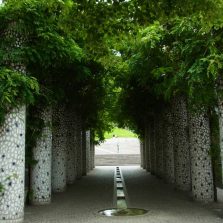
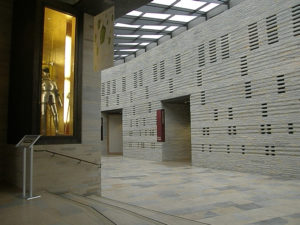
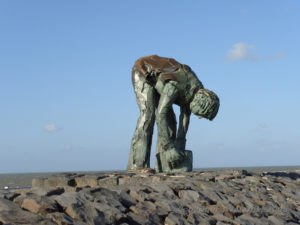
The wish list for enhancing the local area no doubt varies greatly from person to person, but most people would agree that the list probably exceeds the available resources for delivery. Opportunities do, however, exist to make a difference. In part this will be strategic planning for future investment, in part identifying quick wins achievable within a modest budget. HUDG would like to join with others to consider whether, and how, the following potential projects could be moved forward.
THE GREENING OF HASTINGS
As we begin to move forward from the Covid lock down, steps are being taken by our Local Authorities to improve safety in the public realm by encouraging more walking and cycling, in a socially distanced environment, as an alternative to public transport. Initially this looks like it will take the form of some fairly basic, somewhat mundane, widening of footpaths and the possible introduction of additional on-road “white line” cycle ways. This is all well and good as an interim measure, but it is not good enough for the long term.
Should we not take the opportunity to re-imagine how our public spaces could be altered to provide a more welcoming environment for active travel? As many will know, there is an ongoing, long term project – The Hastings Greenway – which seeks to promote largely off-road, well-landscaped walkways and cycle ways. The suggestion being made here is not an attempt to supplant that project, but to provide some complementary improvements in other areas.
Sheffield has already instigated a long term, city-wide project called “The Greening of Sheffield”, which takes a revolutionary approach to greening highways, footpaths and neglected spaces. Their approach is to use large scale planting in these areas, not only to enhance the environment but to act, where appropriate, as flood prevention measures using sustainable urban drainage techniques (SUDS).
Although Sheffield has a much larger population than Hastings and is likely to have more resources at it’s disposal, not least a highly-respected in-house urban design team, their initiative could provide a useful template for Hastings to follow. HUDG believe it is well-worth HBC and others examining in more detail.
A VISITOR CENTRE
There has been a long-standing informal debate within the community as to whether Hastings and St Leonard’s should have a visitor centre, what form it should take, and where it should be sited.
Locally, ideas have ranged from the Council sponsored initiative of a visitor centre located at Hastings Castle, to a convention come exhibition centre capable of hosting the Chess Congress and the International Piano Competition alongside trade shows and large scale music events (think a smaller O2), to the suggestion of a 1066 Centre, the latest incarnation of which is included as part of White Arkitekter’s White Rock proposals.
To take a brief look at the ideas outlined above:
At least two funding bids by HBC for the proposed Castle Visitor Centre have failed, due in part to the funder’s perception of inadequate community consultation and their concern that major construction works would irreparably damage a sensitive site.
Hastings, for good or ill, does not have sufficient mid-market hotels to provide the essential accommodation required by an all-year round conference trade, so any development predicated on a Conference Centre is likely to fail the financial modelling test.
The regular suggestion of Hastings having a 1066 Centre has popped up again as part of HBC’s proposals for the White Rock area. Unfortunately this looks like an afterthought. An insignificant building tucked away at the back of town. Unlikely to be the visitor attraction it might be in another location.
Visitor centres come in many shapes and sizes, from the small scale “interpretation” centres attached to existing attractions, such as Battle Abbey, to the more grandiose, purpose built stand-alone attractions, such as the Yorvik Centre in York. All of them require, as part of the feasibility stage, detailed specialist financial modelling to determine their long-term viability. Experience has shown, as with the White Cliffs Experience in Dover, or the National Centre for Popular Music in Sheffield, that getting it wrong can be a very expensive mistake.
So what should Hastings do? Not, we hope, press on with White Arkitekter’s tucked way offering, nor dust off the failed proposals for a Castle Visitor Centre.
Perhaps HBC should step back a few paces and look again at the basics, by consulting the local community to discover what they might want and where, before pressing on with what might be yet another failure.
PUBLIC ART
Hastings has a well-established, vibrant artistic community supporting a number of festivals and events throughout the year, but compared to Folkestone we have relatively few public art works on display in the town.
Folkestone, with a population of about half that of Hastings, has a well-signposted and advertised “art trail” displaying over 70 public art works. Not only does this enhance the town for local residents, but it demonstrably attracts visitors to the town.
The question being asked here is should Hastings follow suit?
We already have some outdoor artworks, but they are too few in number and too widely scattered around town, with no proactive promotion of their existence. If the number of art works were increased, and strategically placed, they could, with those already in existence, form a town wide trail, similar to that in Folkestone, which would encourage visitors to explore beyond the Old Town, increasing the footfall and economic activity in other areas.
HUDG would like to examine the practicalities behind developing such an art trail for the town, and are looking for potential partners to do so. No funding is available as yet, but then none is needed to discuss the possibilities. Expressions of interest can be sent to HUDG via our Contact Form